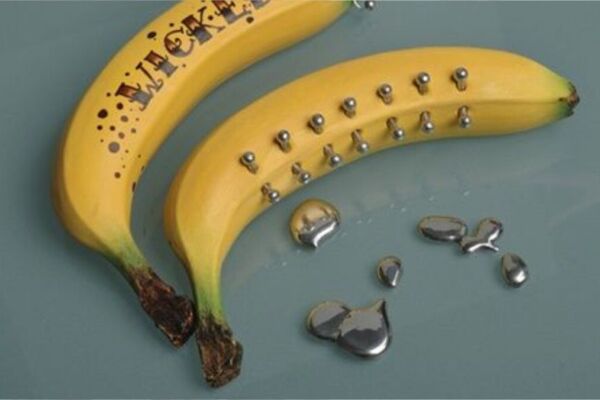The soccer field, also known as a football pitch, in some parts of the world, is the very foundation upon which the beautiful game is played.
It is a rectangle of meticulously maintained grass (or, increasingly, artificial turf) that becomes a stage for athletic endeavour, tactical brilliance and moments of pure sporting drama.
This article delves into the intricacies of the pitch.
What is the soccer field?

The soccer field is designated for playing football. It has its dimensions and markings strictly laid out in Law 1 of the Laws of the Game, titled: “The Field of Play.” This law, set forth by the International Football Association Board (IFAB), ensures uniformity across the sport.
Traditionally, the soccer field has been a carpet of natural grass, meticulously cared for by groundskeepers to ensure a consistent playing surface. The bounce of the ball, the ability to make strong tackles and the visual appeal are all factors that contribute to the preference for natural turf.
However, the rise of artificial pitches in recent decades has provided a more durable and weather-resistant alternative.
These synthetic surfaces can be used more frequently and require less maintenance, making them ideal for high-usage facilities. The ongoing debate between the merits of grass and artificial surfaces is a complex one, with factors such as playing style, cost, and environmental impact all playing a role.
ALSO READ: G Major Scale: Cornerstone of musical harmony, melody
Soccer field dimensions

The soccer field adheres to specific dimensions and markings as outlined in the Laws of the Game. This ensures uniformity and fair play across all levels of competition.
The field itself is a rectangle, with its shorter sides known as goal lines and the longer sides called touchlines. The goal lines, positioned at either end of the pitch, must be of equal length and range from 50 to 100 yards (46 to 91 metres) in width.
The touchlines, running along the sides of the field, must also be equal in length and fall between 100 and 130 yards (91 and 119 metres) long. All lines on the field, including the goal lines and touchlines, maintain a consistent width of no more than 12 centimetres (5 inches). Corner flags mark each corner of the pitch, adding a visual element and aiding in determining out-of-bounds play.
International matches necessitate stricter adherence to specific dimensions. Here, the goal lines remain the same width but are mandated to be between 70 and 80 yards (64 and 75 metres) in length. The touchlines, too, see a reduction in permissible range, falling between 110 and 120 yards (100 and 110 metres) long.
Interestingly, the majority of top-tier professional pitches, like those in the English Premier League, tend to fall within a specific range – typically measuring between 112 and 115 yards (102.4 to 105.2 metres) in length and 70 to 75 yards (64.0 to 68.6 metres) in width.
It is important to note that the term “goal line” encompasses the entire line at each end of the pitch, stretching from one corner flag to the other. This includes the portion between the goalposts but also extends beyond them. In contrast, the term “byline” is used specifically to refer to the section of the goal line outside the goalposts, often appearing in match reports and commentaries.
Goal post
The focal point of any soccer field is undoubtedly the goal. Positioned centrally along each goal line, a goal consists of two upright posts and a horizontal crossbar. Strict regulations govern these structures, ensuring fair play and player safety.
The goal posts, spaced equidistant from the corner flags, stand at a width of precisely 8 yards (7.32 metres) apart. The lower edge of the crossbar, connecting the two posts, is mandated to be 8 feet (2.44 metres) above the playing surface. This configuration creates a rectangular goal mouth measuring 192 square feet (17.84 square metres).
While nets are typically seen suspended behind the goal, their inclusion is not mandatory under the Laws of the Game.
Both the goalposts and the crossbar must be constructed from white-coloured wood, metal or any other approved material. While regulations regarding their exact shape are somewhat flexible, they must adhere to a design that poses no risk of injury to players.
Unfortunately, collisions with goalposts remain a common occurrence, and research specifically focused on improving player safety in this regard appears limited.
However, advancements in material science offer promising solutions. Coatings formulated from specific polymer blends can now be applied to goalposts, demonstrably reducing the impact force experienced by players in collisions.
These innovative materials offer a significant improvement in player safety with minimal compromise to the functionality of the goal itself.
Scoring a goal is the ultimate objective in football. A goal is awarded when the entire ball crosses the goal line, positioned between the goalposts and beneath the crossbar. This applies even if the ball was last touched by a defending player before crossing the line (resulting in an own goal).
However, the referee may deem a goal illegitimate (and subsequently disallow it) if the scoring player or a teammate committed an infraction between the point when the ball was last out of play and the goal being scored.
Similarly, a goal can be nullified if an opposing player commits an offence before the ball fully crosses the line, such as a foul or a saved penalty that rebounds into the net.
The dimensions of football goals used in junior matches are roughly half the size of those employed in adult matches.
Within the broader confines of the football field, two designated areas – the penalty area and the goal area – take on heightened importance during play. These carefully marked zones dictate the enforcement of specific game rules and influence the strategies employed by both teams.
The penalty area
Also commonly referred to as the “box”, the penalty area is a rectangular zone extending inwards from each goal line. Its dimensions are precisely defined: 18 yards (16.5 metres) in width, measured along the goal line, and 18 yards (16.5 metres) in depth, measured at right angles from the goal line.
These markings create a rectangular area directly in front of each goal, serving as a critical zone where the goalkeeper enjoys certain privileges. Most notably, the goalkeeper is the only player permitted to handle the ball within the penalty area, provided they do not commit a foul in the process.
A penalty kick, awarded for a foul committed by the defending team within this area, is taken from a designated spot located 12 yards (11 meters) directly out from the centre of the goal line.
The penalty area arc, located outside the penalty area but within 16.5 yards (15 meters) of the goal line, plays a role in penalty kick situations. Players from both teams, other than the penalty taker, must remain outside this arc until the kick is taken.
ALSO READ: Snapchat Planets: How the Friends Solar Systems work
The goal area
A smaller rectangular zone nested entirely within the penalty area, the goal area is 6 yards (5.5 meters) in width, measured along the goal line, and 6 yards (5.5 meters) in depth, measured at right angles from the goal line. This creates a smaller rectangle directly in front of each goal. The primary purpose of the goal area is to designate the location from where a goal kick must be taken.
A goal kick is awarded to the defending team whenever the ball has entirely crossed the goal line, but not through the efforts of the attacking team.
The defending team can take the goal kick from any point within the goal area. Indirect free kicks awarded to the attacking team within the goal area must be taken from the nearest point on the goal line parallel to where the infringement occurred.
The centre circle
Located at the exact midpoint of the field, the centre circle is a perfect circle with a radius of 9.15 yards (8.5 meters). It marks the spot where the game restarts after a goal has been scored. Players from both teams must be positioned outside the centre circle at the time of the restart, with the team that did not concede the goal taking the kick-off from within the circle.
The halfway line
Running perpendicular to the touchlines and bisecting the field in half, the halfway line serves a primarily informational purpose. It visually divides the field into two halves, aiding players and spectators in gauging the location of the ball and the overall flow of the game. There are no specific game actions directly associated with the halfway line itself.
Corner arcs
Each corner of the field features a quarter circle arc with a radius of 1 yard (0.91 meters), measured from the corner flagpost. These corner arcs become relevant during corner kick situations. A corner kick is awarded to the attacking team if the ball goes over the goal line after being last touched by a defending player.
The corner kick is taken from the nearest corner flagpost, and all defending players must remain outside the penalty area until the kick is taken. The corner arc ensures that these defending players maintain a minimum distance from the corner kick taker, creating a fairer environment for the attacking team to execute the set piece.
How to use the soccer field

The soccer field transcends its physical form to become a platform for strategic brilliance and athletic prowess. Understanding how to effectively utilise the various zones and markings within this field is paramount for players and coaches alike, as it directly influences tactics, player positioning, and ultimately, the outcome of the game.
Attacking and defending Zones: The division of the field into distinct areas shapes team strategies. The final third closest to the opponent’s goal becomes the attacking zone, where players focus on creating goal-scoring opportunities.
Conversely, the final third closest to one’s own goal transforms into the defensive zone, with players prioritising preventing the opposition from scoring. The central third of the field acts as a battleground, where possession is contested and attacks are launched.
The penalty area: This rectangular zone, extending 18 yards (16.5 meters) inwards from each goal line, becomes a sanctuary for the goalkeeper, who is the only player permitted to handle the ball within its confines (except in the case of a throw-in).
A penalty kick, awarded for a foul committed by the defending team within this area, is taken from a designated spot 12 yards (11 meters) from the goal. Understanding when and how to penetrate this area, or conversely, effectively defend it, is crucial for both attacking and defensive strategies.
The centre circle and halfway line: The centre circle, located at the midpoint of the field, marks the spot where the game restarts after a goal. The halfway line, dividing the field in half, serves as a visual reference point for players and spectators to gauge positioning and the flow of the game. Strategic positioning relative to these markings can be vital during kick-offs and strategically planned attacks.
Corner arcs and throw-in lines: Throw-in lines run parallel to the touchlines, marking the areas from where a throw-in can be taken when the ball goes over the touchline. Utilising these areas effectively, particularly when launching attacks from corners or throw-ins close to the opponent’s goal, can create scoring opportunities.
Understanding markings for advantage: Intelligent players exploit the markings on the field to their advantage. For instance, attackers might position themselves on the edge of the offside trap, waiting for the perfect through ball.
Defenders might use the byline (the portion of the goal line outside the goalposts) to shield the ball from attackers while manoeuvring out of tight spaces.
ALSO READ: Volleyball court: Creating the perfect court for hours of fun, engaging play








